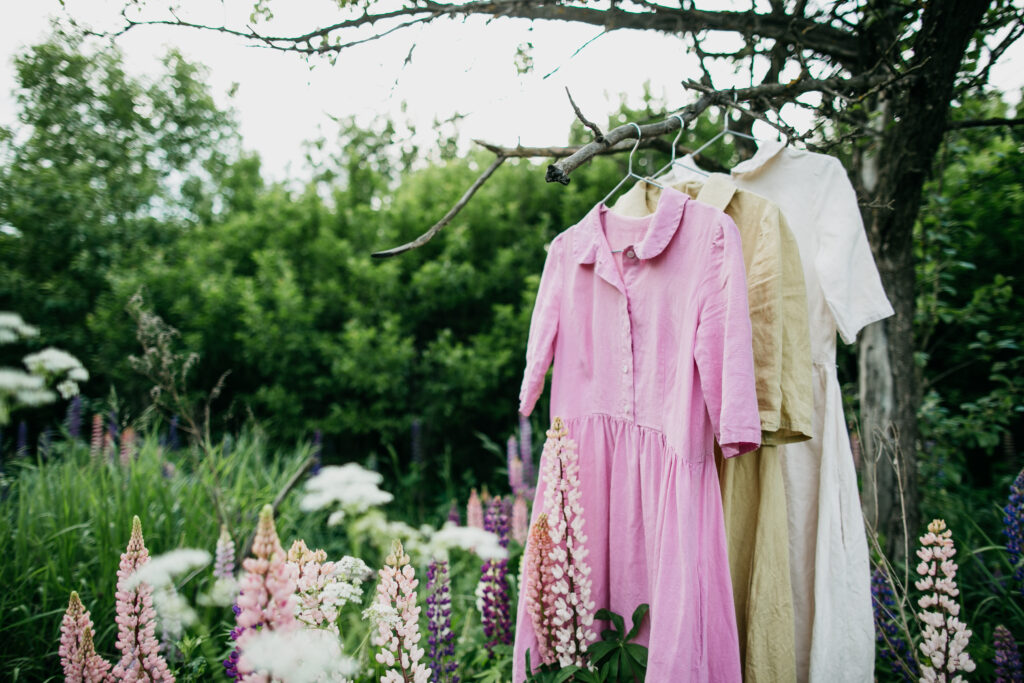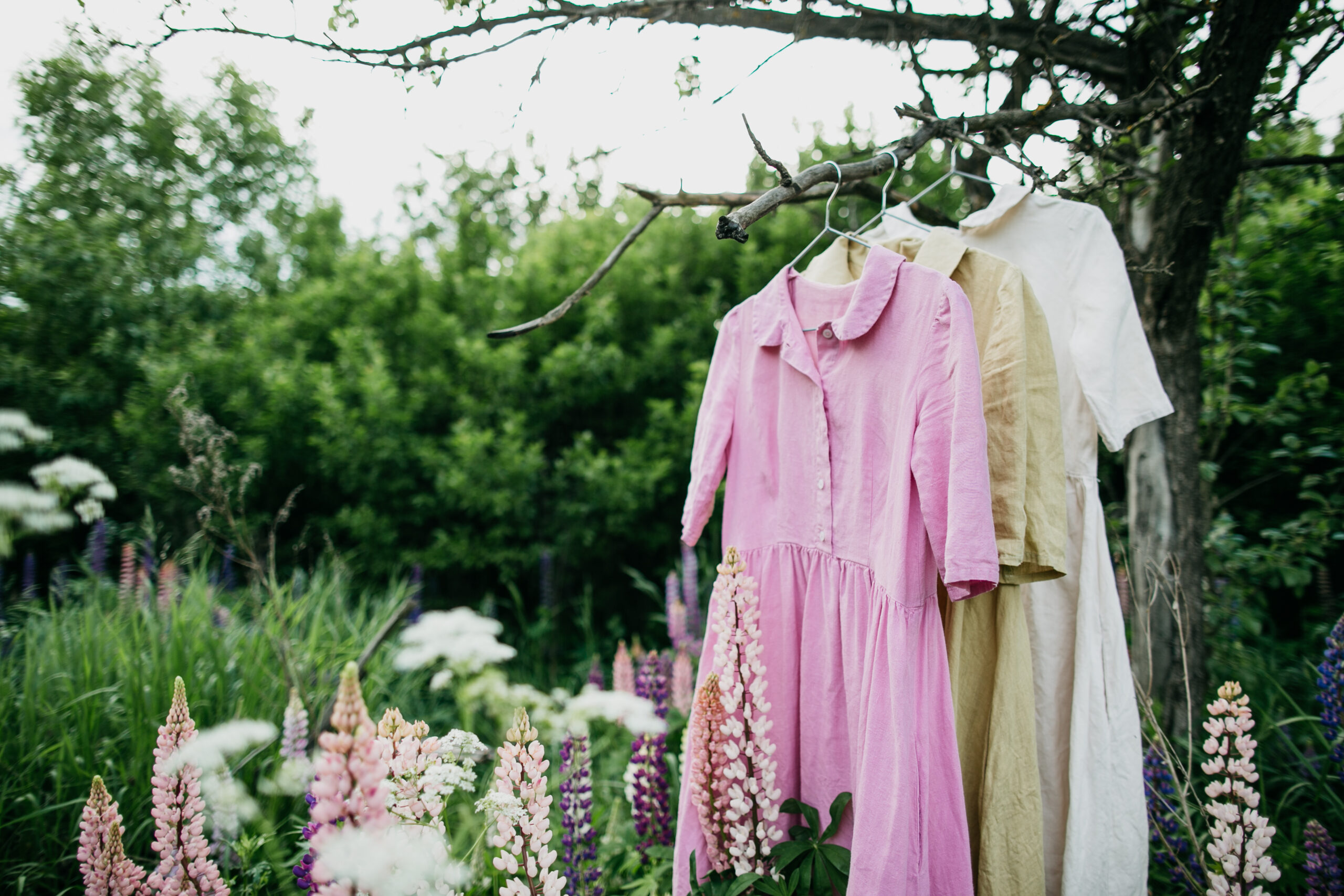Blog article
Winner of the Junior Academy Innovation Challenge Spring 2024: “Circular Textiles”
Funded by the Royal Swedish Academy of Engineering Sciences (IVA)
Published August 14, 2024
By Nicole Pope
Academy Education Contributor
Team members: Rachita J. (India) (team leader), Mariia H. (Ukraine), Sofía R. (Colombia), Alex B. (USA), Sylvia X. (USA), Altynay N. (Kazakhstan)

Textiles and fashion are important sectors for the global economy, but as demand increases, so do the costs to the environment and people – due to harmful production processes that destroy natural resources and the mountains of textile items that are thrown away every year.
It is estimated that 87% of the world’s textile waste ends up in landfills or incinerators. This environmental impact affects not only the clothes we wear every day, but also the textiles used in medicine, agriculture and manufacturing.
For the Junior Academy Innovation Challenge “Circular Textiles”, this international student team developed new proposals to improve environmental standards in textiles, with each member bringing their own insights to shape their solution. “Throughout the project, everyone contributed their unique ideas and used their expertise to advance our goals,” explains Sylvia. “The synergy within the team was palpable and fostered an environment of creativity and productivity.”
The students collaborated online through the academy’s Launchpad platform, breaking down tasks among the group to develop their comprehensive plan. “I did some research and created spreadsheets with the information about the project,” says Mariia. “I also contacted some experts and worked on Lean Canvas.” The team found that technical textiles – which are designed and manufactured with specific functions in mind – are a fast-growing sector, set to reach $213 billion in 2023, up 5.6% from the previous year.
Replacement for unsustainable synthetic materials
The group focused on finding a sustainable replacement for fossil fuel-based synthetic yarns, natural materials like viscose (rayon) that are associated with deforestation, and fibers like cotton that require a lot of water to grow. They came up with biofabrics as a potential solution. The students proposed tackling the three main drawbacks of biofabric clothing – its high cost, susceptibility to microbes, and low wash resistance – to create a more affordable, long-lasting product.
Their solution was to use agricultural waste to optimize the production of a synthetic cellulose fiber called lyocell, and to rely on deep eutectic solvents (DES) as an alternative to the more expensive chemicals traditionally used in cellulose extraction to reduce costs. Another groundbreaking innovation is the application of silver nanostructures to the lyocell fibers, which give the fabric both increased durability and antibacterial properties, and can withstand more than 20 washes.
To combat the pollution caused by textile dyeing, team members proposed using Direct Laser Interference Patterning (DLIP), a cutting-edge technique that uses laser beams to create nanostructured surfaces with precise interference patterns that produce vibrant colors without the use of toxic dyes.
Throughout the competition, the team had a very tight schedule. It wasn’t always easy to find time to meet across different time zones. “Throughout the project, there were some challenges, the biggest being the time difference,” says team leader Rachita. “However, I tried to overcome this by further dividing the team into teams and only distributing tasks after approval by the whole team.” For his part, team member Alex created a spreadsheet to keep track of availability. “This allowed us to schedule meetings that as many people as possible could attend,” he says.
Striving for sustainable textile production
The students realised that in addition to using technologies to make textile production less harmful to the ecosystem, it is also about raising consumer awareness of environmental impacts to promote circularity and sustainability in the industry, especially for low- and middle-income populations, which make up an estimated 90 percent of the world’s population.
They developed “EcoFashion,” an app designed to educate and engage users of all ages. It includes age-specific games for toddlers and teens, challenges to motivate adults, and mini-courses and interactive modules that provide a wealth of information and use psychology to change consumer behavior.
For nine weeks, team members worked long hours to develop their innovative approach and summarize their findings in a polished presentation. “Given the wealth of information and the high quality of research conducted by each team member, condensing it into a concise presentation was a daunting challenge,” says Sofia. “To overcome this hurdle, we collectively decided to invest extra hours and work diligently to effectively summarize our findings while ensuring that the essence of our work was preserved.”
Their success and the skills they gained while making friends across borders made the effort worthwhile. “The experience was great because it was my first time doing something like this,” says Altynay. “I think such an experience will help me in the future to explore other things and communicate with different people.”
Read about the other winner of the Junior Academy Innovation Challenge in Spring 2024:
Using artificial intelligence and augmented reality to support people with dementia

